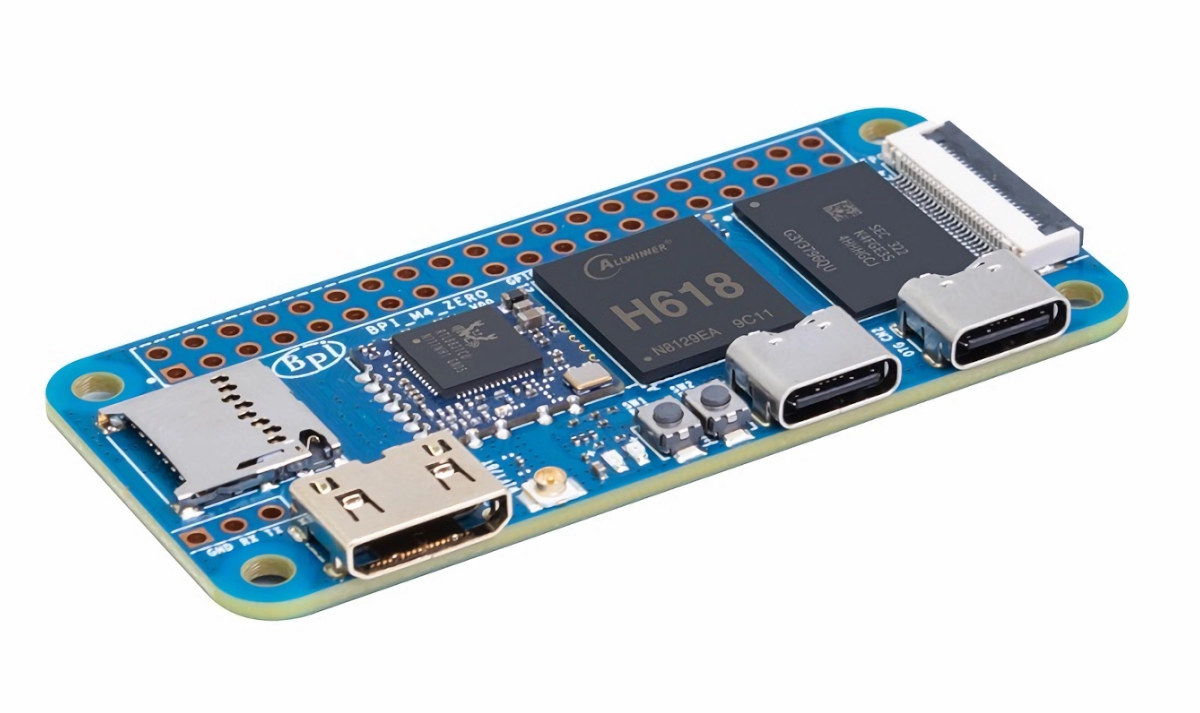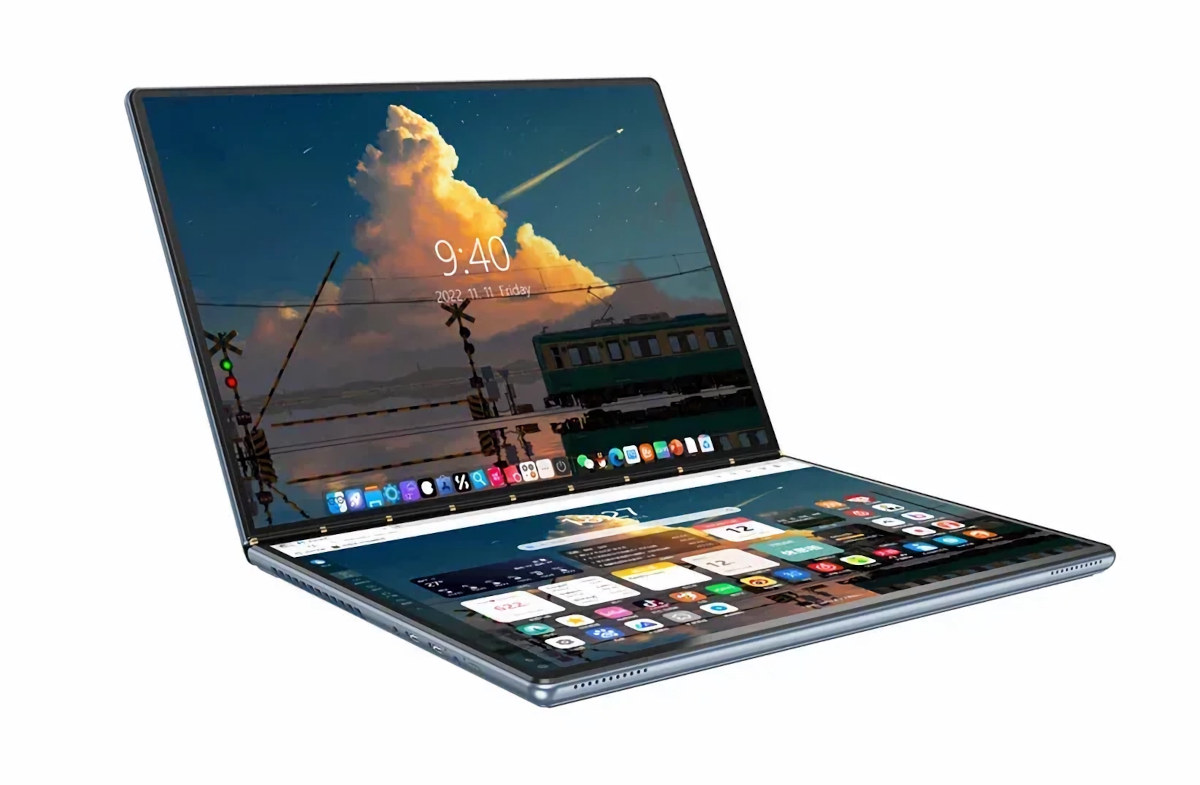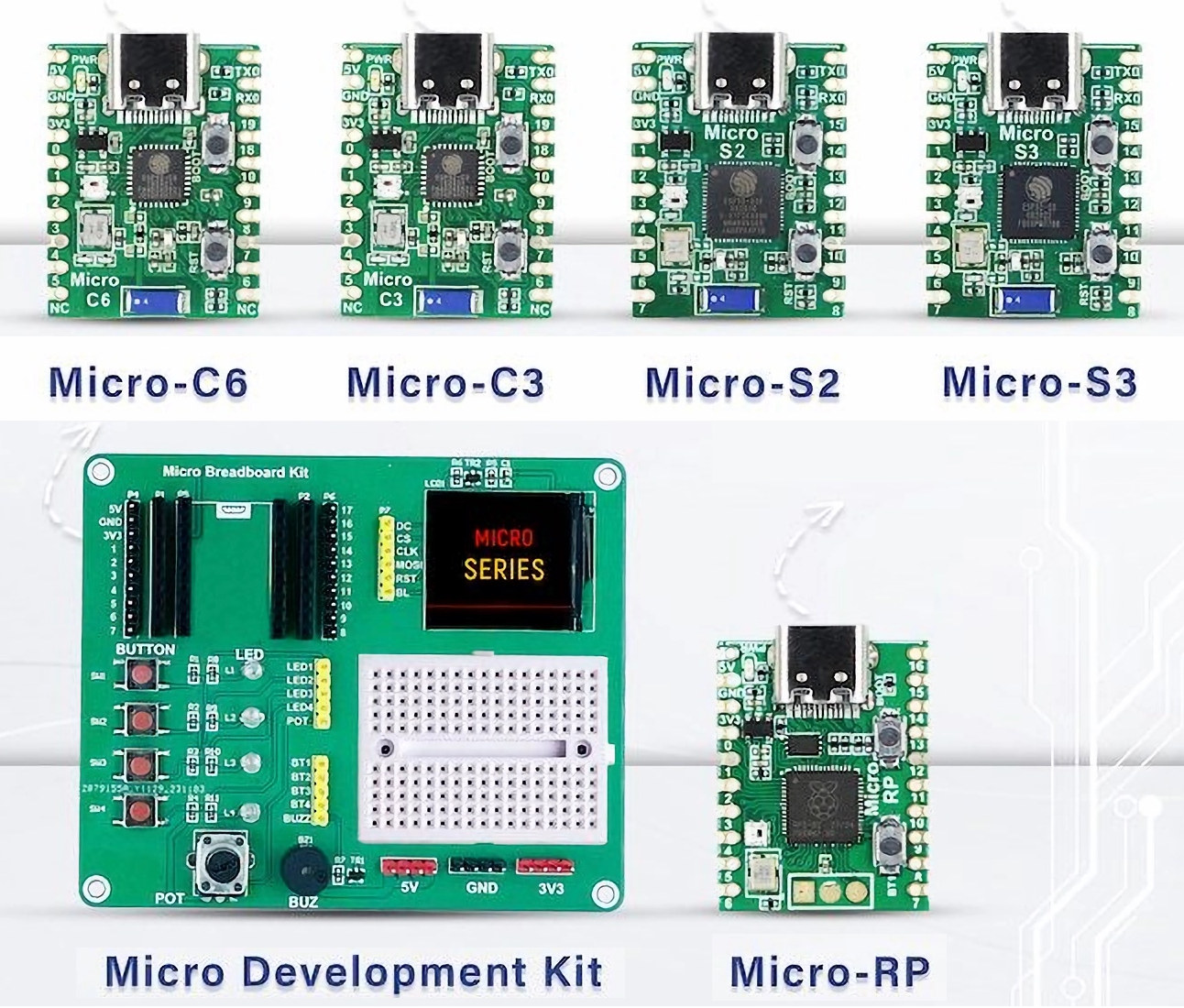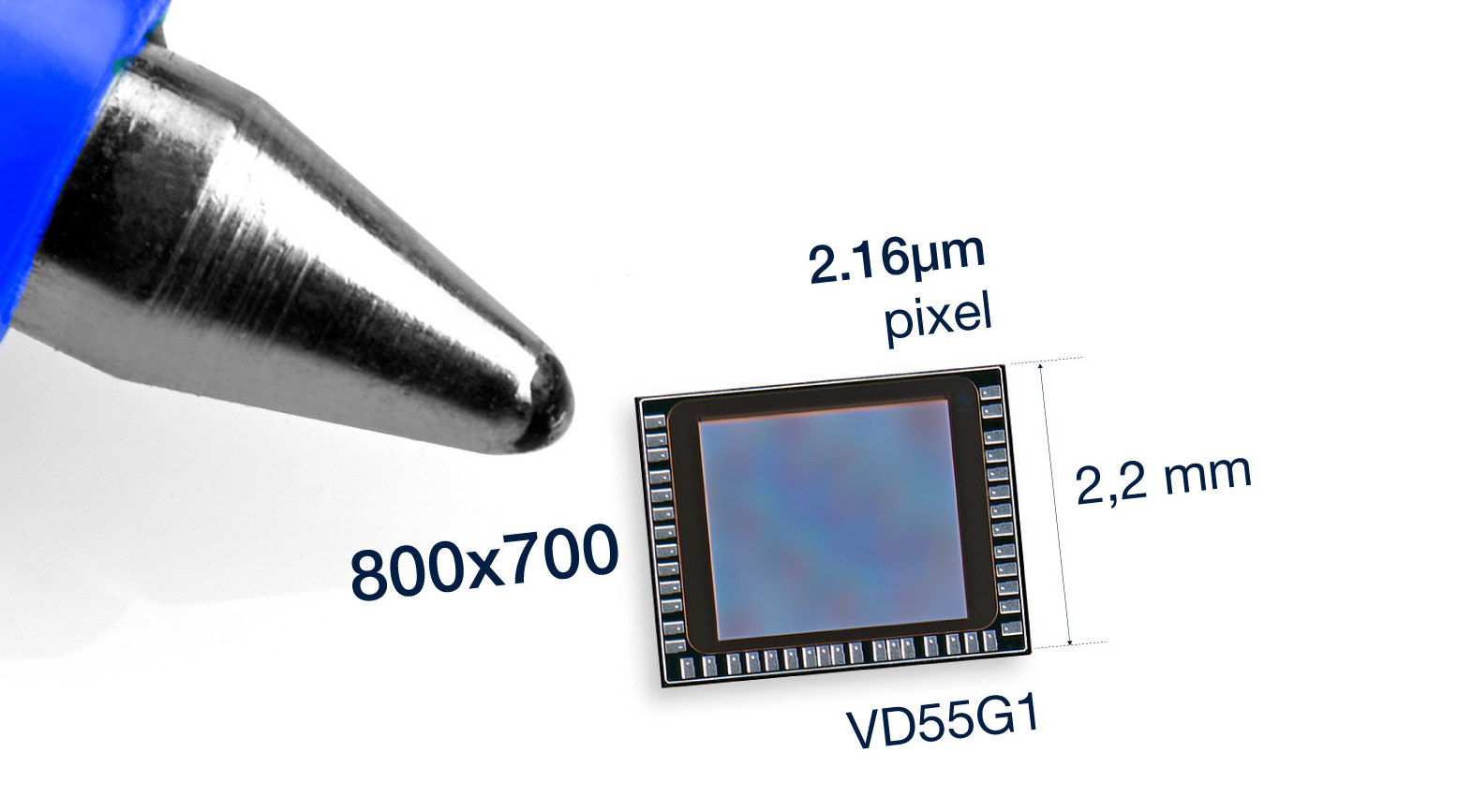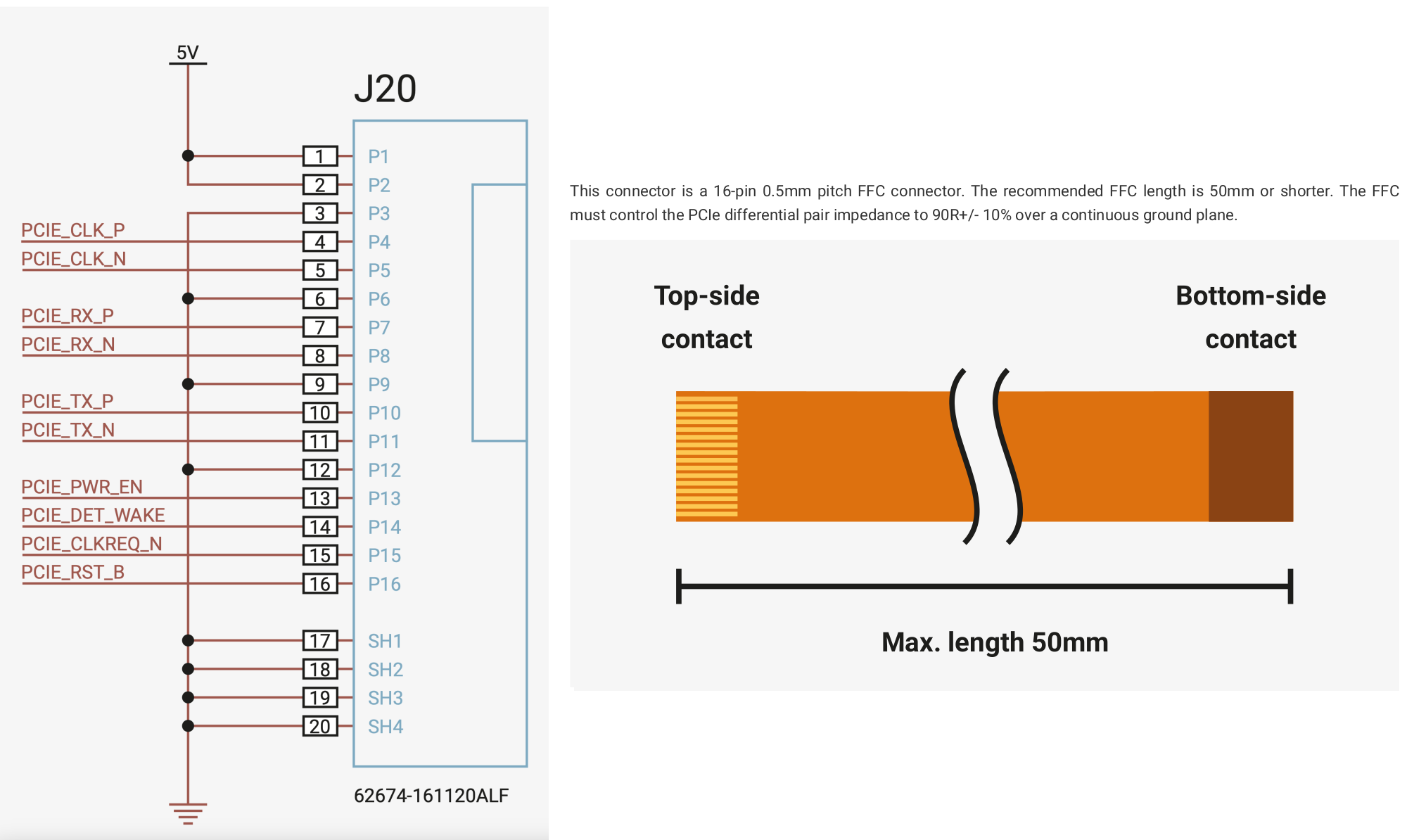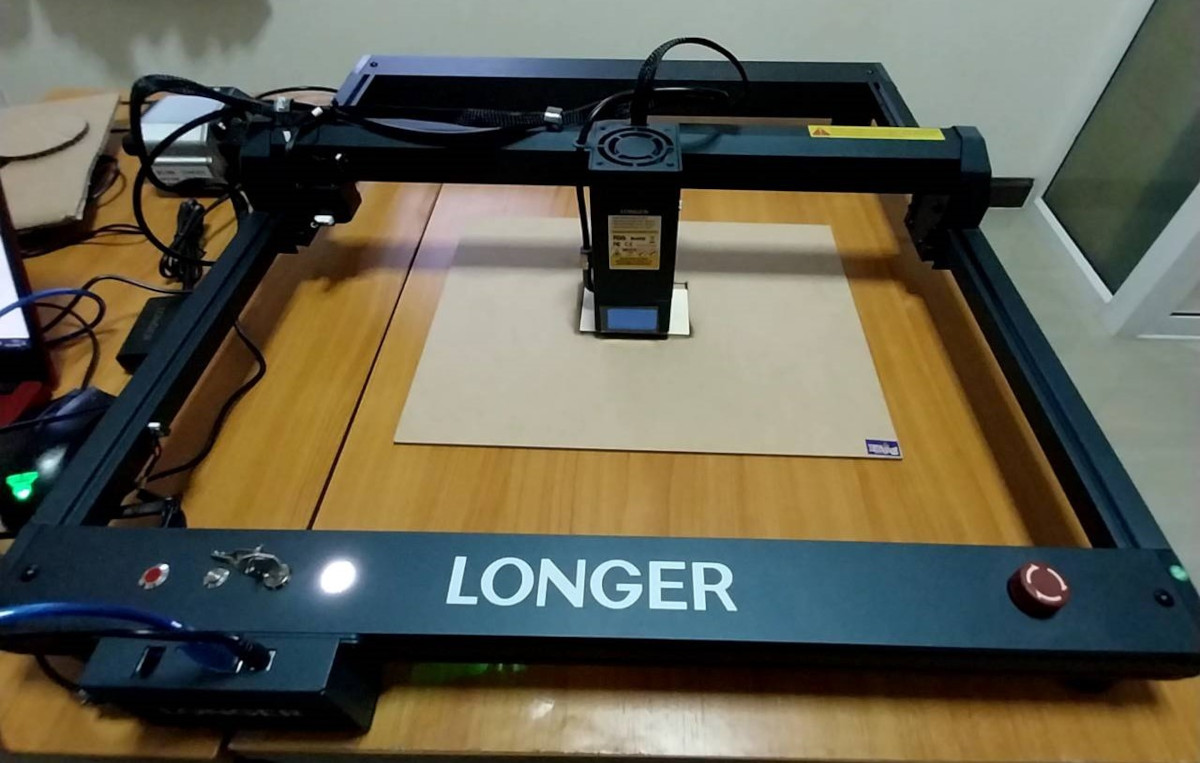Banana Pi BPI-M4 Zero is another Raspberry Pi Zero 2 W alternative with an Allwinner H618 quad-core Arm Cortex-A53 processor, 2GB LPDDR4, 8GB eMMC flash, mini HDMI video output, two USB-C ports, WiFi 5 and Bluetooth 4.2 wireless connectivity and the usual 40-pin GPIO header as well as a 24-pin “Misc” FPC header. It succeeds the Banana Pi BPI-M2 Zero launched in 2017 with an Allwinner H2+ quad-core Cortex A7 processor with basically the same form factor but a more powerful 64-bit Arm processor, more memory (2GB vs 512MB), built-in eMMC flash, dual-band WiFi 5, and the 24-pin MIPI CSI connector is now a “Misc” connector with USB 2.0, Fast Ethernet, and other I/Os. Banana Pi BPI-M4 Zero specifications: SoC – Allwinner H618 CPU – Quad-core Arm Cortex-A53 processor @ up to 1.5GHz with 1MB L2 cache GPU – Arm Mali-G31 MP2 GPU with support for OpenGL ES 1.0/2.0/3.2, OpenCL […]
SZBOX DS135D – A dual-screen laptop with an Intel Processor N100 CPU
A few companies have been making dual-screen laptops – where one of the screens is placed where you’d typically find the keyboard and touchpad – for several years, and this type of design was brought back to the forefront with the Lenovo Yoga Book 9i introduced earlier this year with two 13.3-inch displays and a 13th-gen Intel Core Raptor Lake-U processor for $2,000 and up. If you like the concept but don’t quite have that much money to spare, SZBOX DS135D dual-screen laptop is a much cheaper option with two 13.5-inch displays, an entry-level Intel Processor N100 SoC, 16GB DDR5, and 128GB to 2TB NVMe SSD going for $699 and up on Aliexpress. SZBOX DS135D specifications: SoC – Intel Processor N100 quad-core processor up to 3.4 GHz (Turbo) with 6MB cache, 24EU Intel HD graphics @ 750 MHz; TDP: 6W System Memory – 16GB DD5 Storage – 128GB to 2TB […]
Microflex MCUs – Tiny USB development boards based on ESP32-S3, ESP32-S2, ESP32-C3, ESP32-C6, or Raspberry Pi RP2040 (Crowdfunding)
SB Components is back with yet another crowdfunding campaign this time with the Microflex MCUs USB development boards all with the same tiny form factor and offered with a choice of five microcontrollers namely Raspberry Pi RP2040, ESP32-S3, ESP32-S2, ESP32-C3, or ESP32-C6. Microflex MCUs share the same layout with a USB-C port for power and programming, a built-in RGB LED, two buttons for Boot and Reset/User, and two rows of 10-pin with through and castellated holes to access the GPIOs and power signals such as 5V, 3.3V, and GND. But they differ in terms of the processor used, wireless features, and available I/Os as shown in the table below which sadly lacks any information about the flash and eventual PSRAM… The illustration below includes some more details for the Micro-C6 with the main components, ports, and a pinout diagram. Programming the firmware for the ESP32-series can be done through the […]
STMicro VD55G1 – A small, low-power global shutter I3C camera sensor for computer vision
STMicro VD55G1 is a new global shutter I3C camera sensor with a small die size of 2.7 x 2.2 mm, 804 x 704 pixels native resolution, and consuming about 1mW in its ‘always-on’ autonomous mode to wake up the host when motion is detected. Camera sensors are available with rolling or global shutter, with most from the former type, but as we’ve seen in our reviews of the e-Con Systems See3CAM_24CUG (USB 3.1) and the Raspberry Pi Global Shutter (MIPI CSI) global shutter cameras, the latter is much better we capturing moving objects clearly at high frame rates with fewer artifacts than with rolling cameras. The VD55G1 global shutter sensor will also benefit from the same advantage but is offered in a smaller package working over MIPI CSI and/or I3C, making it suitable for devices with small batteries used in applications such as eye tracking or motion estimation. STMicro VD55G1 […]
CWWK x86-P5 fanless mini PC with two 2.5GbE ports ships with up to Intel Core i3-N305 CPU
CWWK x86-P5 is a fanless mini PC powered by an Intel Alder Lake N-series N100 (quad-core) or Core i3-N305 (octa-core) and equipped with two 2.5GbE ports using Intel i226V controllers making it suitable for networking applications such as a firewall or a soft router. But it’s also a standard mini PC with two HDMI 2.0 ports, two USB 3.2 ports, and up to four USB 2.0 ports making it a candidate to run Promox with both a desktop OS like Windows 11 or Ubuntu 22.04 and a networking OS such as pfSense or OpenWrt. CWWK x86-P5 specifications: Alder Lake-N SoC(one or the other) Intel Processor N100 quad-core processor @ up to 3.4 GHz (Turbo) with 6MB cache, 24EU Intel UHD graphics; TDP: 6W Intel Core i3-N305 octa-core processor @ up to 3.8 GHz (Turbo) with 6MB cache, 32EU Intel UHD Graphics; TDP: 15W System Memory – Up to 32GB DDR5 […]
Raspberry Pi releases PCIe FFC connector specifications, new HAT+ standard
Raspberry Pi has released two new specifications one for the PCIe FFC connector and related cable and the other for the new Raspberry Pi HAT+ (HAT Plus) standard that’s simpler, takes into account new features in Raspberry Pi 4/5, and has fewer rules around mechanical dimensions. PCIe FFC connector specifications The Raspberry Pi 5 was announced over 2 months ago with a new PCIe FFC connector, and people may been playing around with it and even launching products such as an M.2 HAT for the Raspberry Pi 5 since then even though the pinout and specifications were not available. But Raspberry Pi has now released the specifications (PDF) for the PCIe FFC found in the Raspberry Pi 5 and likely future models as well. The 16-pin 0.5mm pitch FFC connector features a single lane PCIe interface, something we knew already, but the pinout diagram and recommendations for the FFC cable […]
UP 7000 SBC review – Part 2: Ubuntu 22.04 on a fanless Intel N100 single board computer
The UP 7000 is a credit card-sized Alder Lake-N single board computer that can be used as an alternative to the Raspberry Pi 5 for industrial applications. AAEON sent me a model with an Intel Processor N100 CPU, 8GB LPDDR5, and a 64GB eMMC flash, and I went through an unboxing in the first part of the review, compared its mechanical design to the earlier UP 4000 and Raspberry Pi 5 SBC , and also installed Ubuntu 22.04 since the UP 7000 board did not come with any OS and would initially boot to the UEFI shell. I’ve now spent more time with the board and I will report my experience with the UP 7000 SBC running Ubuntu 22.04 in this article checking out features, performance, video playback, power consumption, and so on using the UP 4000 review with Ubuntu 22.04 I did last year as a template plus some […]
LONGER Laser B1 30W review – A 33-36W laser engraver tested with LightBurn
Today we will review the LONGER Laser B1 30W laser engraver with the LightBurn program. The machine is equipped with a laser module comprised of six 6W laser diodes for a total power of 33 – 36 W when accounting for some variation in the power delivered by each diode. The Laser B1 can cut through 20 mm thick wood and 10 mm thick black acrylic in just one cut, and with multiple passes, it can also handle up to 25mm thick wood 50mm thick black acrylic, and even 0.1mm thick stainless steel. The kit comes with an air pump to improve the cutting ability and prevent/limit burns around the engraving or cutting area, and has a working area of 450 x 440 mm. Laser B1 30W specifications Laser Technology – Diode Laser Technology Work area – 450x440mm (17.72×17.32-inch) Laser wavelength – 50nm Focal length – Fixed Focus-50mm Laser spot […]


